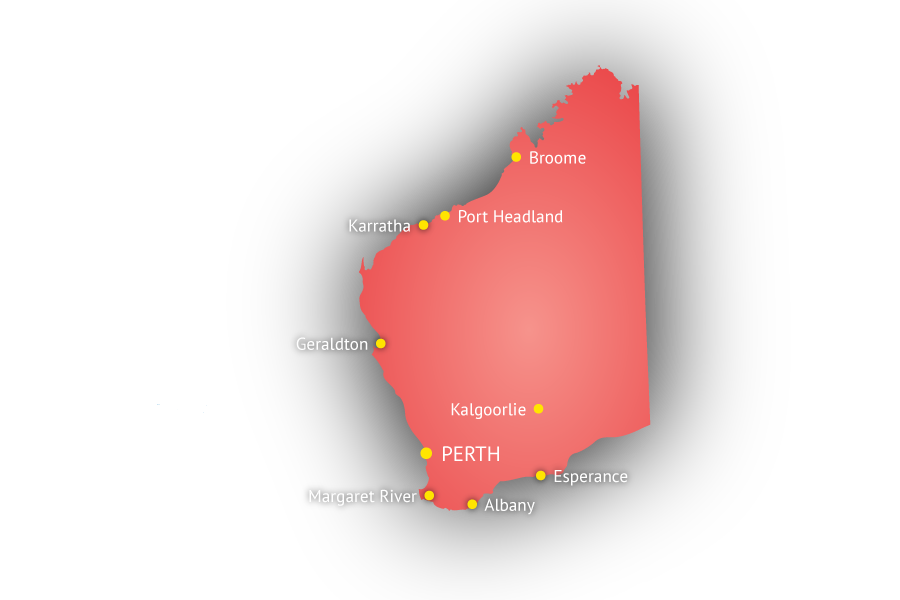


Western Australia is Australia’s largest start and occupies the entire Western third of Australia. The state has about 2.565 million inhabitants, around 11% of the national total, however a significant portion of the state is sparsely populated and 92% of the population lives in the south-west corner. Western Australia’s economy is largely driven by extraction and processing of a diverse range of mineral and petroleum commodities.
The southwest coastal area has a Mediterranean climate and is one of the top six regions for marine biodiversity and contains the most southerly coral reefs in the world. From November to March, evaporation exceeds rainfall, and it is generally very dry. Perth, the capital, has a mean maximum temperature of 18 degrees centigrade in July and a mean maximum temperature of 32 degrees centigrade in February.
The central two-thirds of the state is arid and sparsely inhabited. The only significant economic activity is mining. Annual rainfall averages less than 300 millimetres (8–10 in), most of which occurs in sporadic torrential falls related to cyclone events in summer.
The northern tropical region (the Kimberley) has an extremely hot monsoonal climate with average annual rainfall ranging from 500 to 1,500 millimetres (20–60 in), but there is a very long almost rainless season from April to November. The highest observed maximum temperature of 50.5 °C (122.9 °F) was recorded at Mardie Station on 19 February 1998
Situated on the Swan River in Western Australia’s south-east corner and looking out across the Indian Ocean, Perth is a world city, with a population of 1.7 million, combining vibrant shopping, dining, cultural and sporting experiences within glorious landscapes of established wineries, large inner city parks and stunning beaches. Work in Perth and enjoy weekends visiting the famous markets in the busy harbour town of Fremantle (‘Freo’), sail to unique Rottnest Island or drive down south to the magnificent Margaret River wineries.
Kalgoorlie, now known as Kalgoorlie-Boulder, is located 595 km east of Perth and was founded in 1893 during the gold rush. It has a current population of 31, 000 and open cut gold mining, in the form of a “super pit” continues there today. Aboriginal and Torres Strait Islander people make up 6.8 percent of the population. The Wangkatja people are the traditional inhabitants of the Kalgoorlie area. In fact, the Wangkatja people have (for many thousands of years) and continue to inhabit most of the Goldfields area and extend into the Western Desert Region. At Kalgoorlie-Boulder Community High School students study the Wangkatja language and culture as a language offering other than English.